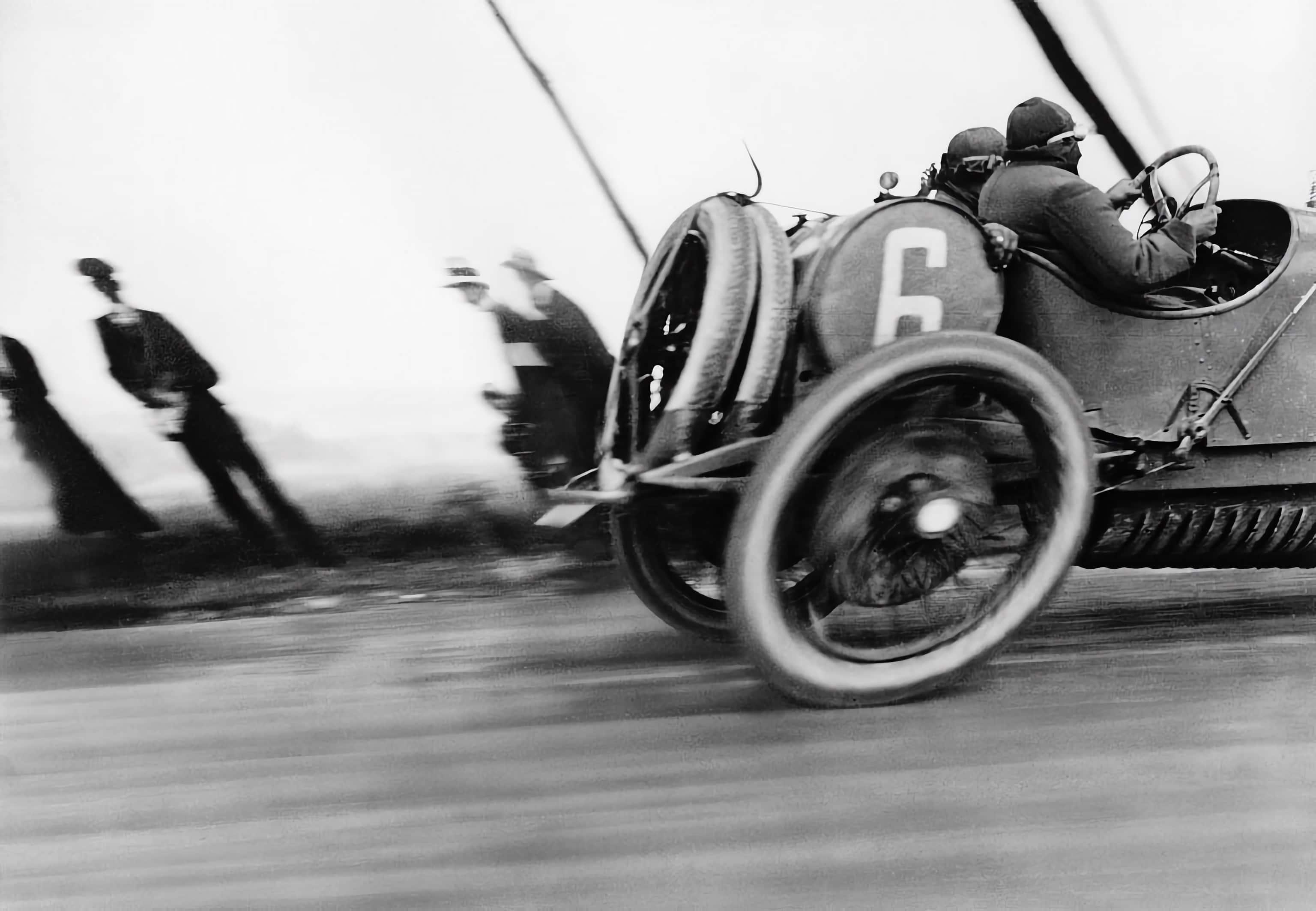Henri Lartigue’s photo of a race car shows one of the wonderful ways in which the camera records its own reality. Spectators lean left while the speeding car tilts right all because of some facts about how his camera works. Lartigue’s camera had a focal plane shutter, a two-part light curtain that slides to one side to expose the film while the second part follows a moment behind to again block the light.
While slow exposures might allow one curtain to open fully before the second closes, fast exposures require both to be in motion at once, often exposing only a tiny slit of the film at any moment while they travel across the frame. The result is that each bit of film represents a slightly different moment in time. In the picture above, the curtains moved from bottom to top. The race car tilts to the right because the car itself moved quite quickly compared to the curtains. The spectators lean to the right because Lartigue was panning the camera from left to right to follow the race (though if his panning was perfectly matched to the car’s speed, the wheel would be round and not distorted).

Henri Lartigue’s rather famous photo of a race car.
RIT’s Andrew Davidhazy appears to be quite a fan this distortion, which is often called “slit-scan photography” when used creatively. The shutter curtains on new cameras often move too fast to reveal much distortion, so he built an add-on that would help him get the slit-scan effect.
Besides being fast, most modern film camera shutter curtains now travel horizontally, rather than vertically. This changed orientation limits our ability to see any distortion, as most fast motion is also horizontal. (A horizontal shutter on Lartigue’s camera would have resulted in the car getting slightly wider or narrower, depending on the shutter direction relative to the car’s motion. The pedestrians in the background would get wider or narrower in an inverted relationship to the car’s distortion.).
What amuses me, however, is that digital cameras are bringing this type of distortion back:
A digital camera’s imaging element, either a CCD or CMOS sensor, is made up of pixels that are organized into horizontal lines that are then stacked to make a picture. And the camera takes the picture by reading each pixel from left to right, line by line, from top top bottom. In the end, pixel number one in the upper left corner of the frame is sampled long before pixel five million in the lower right. Sure, the whole process is usually done fast—very fast±but it’s not fast enough to keep these helicopter rotor blades from looking bent. The camera in my Clie has a particularly slow scan rate, making it easy to lean cars sideways. I took advantage of the effect for a self portrait when I wanted to blur my office in the background.